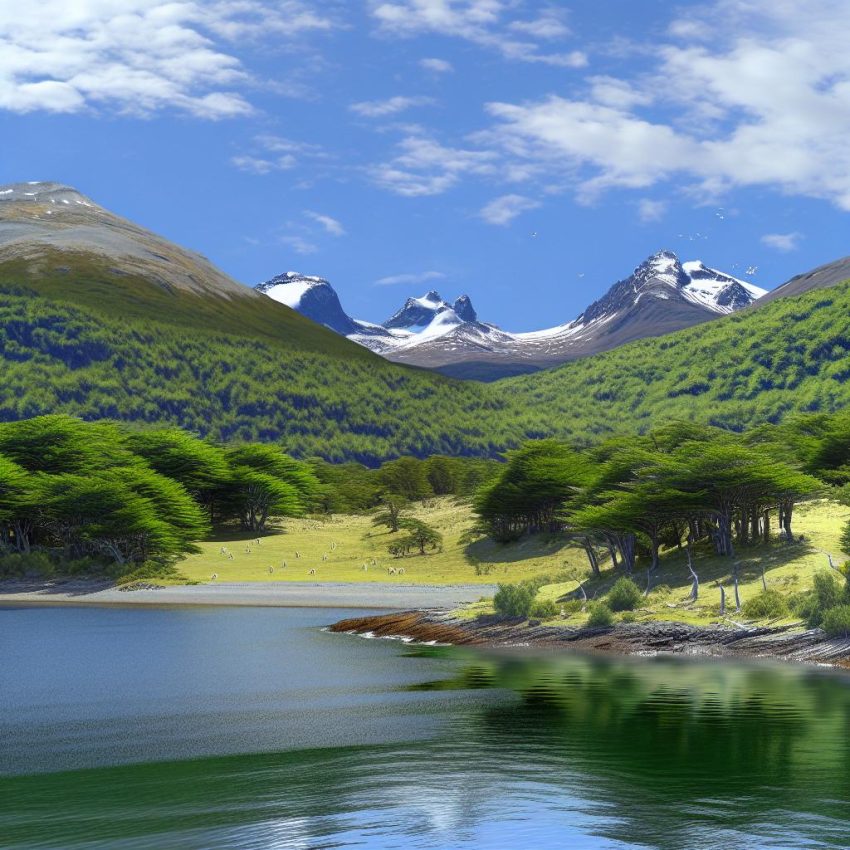Overview of Tierra del Fuego National Park
Tierra del Fuego National Park, stretching over an impressive 69,000 hectares, sits proudly on the Argentine side of the island of Tierra del Fuego. It holds the distinction of being the southernmost protected wilderness area in Argentina. Located a mere 12 kilometers west of Ushuaia, which is recognized as the southernmost city in the world, this national park is a significant part of the Andean-Patagonian forest subgroup. It boasts an array of diverse landscapes marked by sweeping mountain vistas, dense forest areas, and striking emerald green lakes.
Geographical Features
The geographical features of Tierra del Fuego National Park are nothing short of spectacular. The park is defined by its rugged mountains and densely packed forests, which serve as the natural habitat for various native tree species. Among these, the lenga, ñire, and coihue trees are particularly notable. These forests present a captivating wilderness that is both remote and inviting. Numerous lakes, such as the picturesque Lake Roca, contribute significantly to enhancing the park’s scenic beauty, offering mirror-like reflections of the surrounding landscape. Furthermore, one of the unique aspects of the park is its proximity to the historic Beagle Channel. The park lies along the channel’s coastline, providing stunning views of coastal landscapes, which include dramatic rugged cliffs and serene isolated beaches.
Flora and Fauna
Tierra del Fuego National Park is a habitat bustling with biodiversity. It supports a wide range of ecosystems that are home to a variety of flora and fauna, some of which are unique to this particular region. The forests within the park are predominantly composed of lenga and guindo trees. These towering trees form canopies under which a rich undergrowth of shrubs and mosses thrive, creating a multi-layered habitat teeming with life.
The fauna of the park is equally varied, offering sanctuary to numerous bird species, including the striking Magellanic woodpecker and the majestic Andean condor. These birds are often seen soaring overhead or heard echoing through the forest. Mammalian wildlife in the park includes the red fox and the guanaco, a relative of the llama, both of which are frequently observed. Of special note is the Fuegian fox, a species particularly associated with the region. Each of these animals plays a role in the park’s vibrant ecosystem, contributing to the intricate balance that maintains its ecological integrity.
Recreational Activities
Tierra del Fuego National Park is a paradise for recreation enthusiasts, offering numerous activities that allow visitors to engage deeply with the natural environment. Hiking is one of the primary attractions, with a range of trails available that cater to various levels of difficulty and physical fitness. Among the many trails, the Coastal Path, known as Senda Costera, is among the most popular. This path offers breathtaking views over the Beagle Channel, providing photographers with countless opportunities to capture the stunning landscape.
For those interested in water-based activities, canoeing on the park’s serene lakes and meandering rivers presents an exciting opportunity to explore the wilderness from a different perspective. Canoeing allows visitors to get up close to the natural beauty and tranquility of the park’s aquatic environments. Bird watching is another popular activity, with the park’s diverse avian population offering a rewarding experience for both amateur and experienced birders.
Additionally, engaging in interpretive tours led by knowledgeable local guides can greatly enrich a visitor’s understanding and appreciation of this unique environment. These tours offer insights into the ecology and geology of the park and the cultural history of the region, enhancing the overall visitor experience.
Conservation and Visitor Guidelines
Conservation efforts are at the core of maintaining Tierra del Fuego National Park’s pristine condition. The park is subject to specific regulations designed to protect its natural environment and conserve its rich biodiversity. Visitors play a crucial role in these efforts and are encouraged to adhere to established guidelines to minimize their impact on the ecosystem.
Staying on designated trails is one of the vital guidelines, helping to avoid unnecessary disturbances to the landscape. Proper campfire management, which includes ensuring all fires are completely extinguished, is essential to prevent damage and reduce the risk of uncontrolled wildfires. Additionally, visitors are required to remove all waste, a practice critical to maintaining the integrity of the park’s flora and fauna.
By understanding and practicing these visitor guidelines, individuals can contribute to the ongoing conservation efforts that are crucial to preserving the park’s ecological integrity. These efforts help ensure that Tierra del Fuego National Park can be enjoyed by future generations as a largely undisturbed natural area.
For those interested in learning more about Tierra del Fuego National Park, including detailed visitor information, planning guides, and park regulations, visiting the official website is recommended. This resource provides comprehensive information to enhance the visitor experience while supporting the park’s conservation goals.

